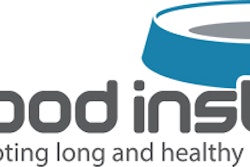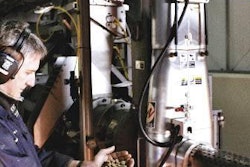The long-anticipated National Research Council (NRC) work Nutrient Requirements of Dogs and Cats has finally been released. The text has been billed as the most authoritative compilation of up-to-date research on the nutritional needs for dogs and cats. Unfortunately, and despite significant scientific contributions of many experts from academia and the petfood industry during the last 20 years, the NRC has fallen far short of its stated goals. Those goals included providing a research compendium that is truly useful to pet owners, government and, very importantly, the petfood industry.
The Pet Food Institute (PFI) and its members actively supported the development of the NRC's new document. Since the panel of experts was convened, the petfood industry has tried to share information that would aid in the development of a truly comprehensive collection of the best data available on pet nutrition. Even since before the pre-publication version of the guide was released, which itself was rife with errors and editorial difficulties beyond mere typos, PFI has offered input. Again and again, unfortunately, that input, designed only to improve the final document, has been largely ignored.
Safe Upper Limits
For example, and without addressing many of the other errors contained in that document, the data charts and the concept of Safe Upper Limits (SULs), as presented in the book, are still deeply flawed. The SULs, supposed maximums of nutrients an animal should receive, seem arbitrary and in many instances appear to lack a scientific basis or a consistent definition. There are many complete and balanced petfoods currently on the market that exceed some of the SULs listed in the document. These petfoods have been tested to substantiate that they provide safe and adequate nutrition for the tested lifestage and, contrary to the SULs, pose no safety risk.
Furthermore, the recommended allowances (RA) (minimums) do not correlate with Safe Upper Limits (maximums) and do not provide consistent data. Users of the document who rely on this information could then draw incorrect conclusions about the nutrition or safety of petfood products that differ from the descriptions in the text.
Fewer ingredients
The new book lists fewer ingredients than found in the individual NRC reports for dog and cat nutritional requirements. This failure to include many commonly-used petfood ingredients further exacerbates the report's lack of utility.
It can be used by students and teachers at universities as one of many reference materials since it represents a good literature review on canine and feline nutrition. That said, unfortunately there remain too many other problems within the text and charts for the book to be effectively used in real-world situations, such as formulating products for optimal pet nutrition.
Lack of practical information
In conclusion, and as PFI has previously stated, the final document suffers from many of the same deficiencies and difficulties, as did the pre-publication version. Despite the work of many pet nutrition experts, the final Nutrient Requirements of Dogs and Cats does not provide the practical information that would be expected, even required, in an expert discussion of dog and cat nutrition.
Thus, we are forced to conclude that the final version of the report has failed to present the required data in a manner which could meet its stated goals. The acceptance of this document as the best new guidance could even cause regulators and the public to question the excellent nutrition provided by commercial petfoods currently on the market, as well as the science on which they are based.


















